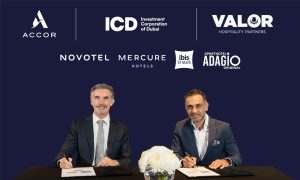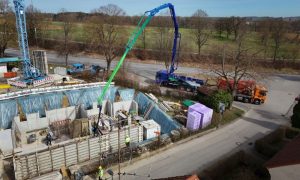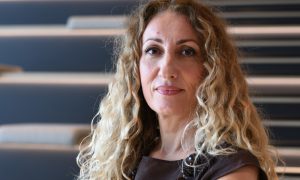Urban design
Ahead of Turkish firm Tabanl?o?lu Architects’ planned expansion into the UAE, managing partner Melkan Tabanlio?lu comments on the need for community-built designs that address unique urban requirements

In 1990, a small architecture firm, Tabanl?og?lu Architects, was set up in Istanbul by an architect called Murat Tabanl?og?lu. Today, the practise employs a staff of 100. Operating predominantly in Turkey, it recently announced plans to expand into the UAE.
Speaking to The Big Project, managing partner Melkan Tabanl?og?lu, who joined the firm in 1995 and is the daughter of its founder, says the move is not a result of the financial crisis impacting the firm’s home market.
“Turkey has faced the crisis, but not as bitter as it was felt in the United States or Europe. Construction is the leading sector in terms of growth data and, financially, we haven’t faced great difficulties.”
In December 2010, Brookings Institution and the London School of Economics prepared a report entitled The Global MetroMonitor, which ranked 150 world cities. The report stated that Istanbul is, in fact, the city performing the strongest after recession, whereas Dubai, the second-best performing city between 1993 and 2007, was ranked among the most stagnant, cites Tabanl?og?lu.
“With Istanbul being the locomotive and indicator for Turkey, we have been lucky so far,” she says.
But it is not only luck that has helped the family-run company weather the storm, the firm has strived to maintain up to 20 projects of different scales on the go simultaneously, keeping the funds coming in.
Sustainable patterns in the production of the man-made environment must rely on technology, while at the same time respecting heritage”
According to Tabanl?og?lu, the company is entering the UAE, instead, in search of “new efficiencies in terms of global and environmental needs and developments”.
“Dubai has been the showcase for world architecture and recently Abu Dhabi and other GCC cities have asserted great demand for the urban development. This creates a valuable medium for architecture and urban design.
“In addition, besides being a close neighbour, we are a part of the Muslim world and we know the culture, naturally. We are familiar, yet there is a great opportunity to learn and share.” The firm has also been spurred on having received a string of awards in 2010, including recognition at Cityscape Global in Dubai last year in the ‘Architecture in the Emerging Market — Community Built’ category for its design of the Tripoli Congress Centre in Libya.
Commenting on community-built architecture; Tabanl?og?lu says it can lead to more challenges than architecture on private investments as the client is often the local or central government, which involves extensive paperwork.
“Yet a building that serves the public is very exciting for an architect. It grants a better chance in creating social spaces that are the core urban functions,” she says.
“The construction sector highly depends on politics and economics in every case, such buildings have greater significance; they become the symbols and prestige for the nations or cities that they belong to, your contribution becomes a part of the vision of the governance of the country.”
Encouraged by such accolades and its ongoing performance, Tabanl?og?lu says the company is also “open to other new relations in the Middle East and North Africa”.
“We have the positive influence to convince the client what is good in terms of architecture and future planning of the new urban lifestyle.”
A building that serves the public is very exciting for an architect. It grants a better chance in creating social spaces that are the core urban functions”
Defining design
Tabanl?og?lu lists a number of aspects that make ‘good’ architecture, not least research and a team approach among engineers, consultants and the client.
“Respecting relations in the project environment and being open to probabilities and possibilities, including technological innovations such as smart, local solutions, we bring ideas and manifest our architectural language.
“Architecture is a system and you have to collaborate and adapt to the situation for the best and most feasible result. If a building works and people who use it or pass by it are happy, it is a good building.”
However, designing landmark structures poses unique requirements, including exclusive expertise, visionary thinking, innovative approaches and collaboration of other engineering and planning disciplines.
A number of projects undertaken by Tabanl?og?lu Architects have been large, mixeduse developments.
“These projects require delicate solutions of multi-disciplinary collaborations; from traffic to landscape design and ground analysis to lighting solutions.”
Tabanl?og?lu says the key to making “better cities” is to overlay different activities in the same space.
“We need to repair the collectivity of space and re-build ceremonial and informal public spaces of our era. Mixed-use projects offer selfsufficient urban units. In terms of design and construction, there has to be more attention to infrastructure. You need to combine different functions and solve them all at once.”
Working with renowned engineering consultants has been crucial to the company’s success, she explains.
Examples of successful mixed-use projects completed by Tabanl?og?lu Architects date back to the 1980s, such as Ataköy Tourism Centre featuring a Marina, hotels, restaurants and entertainment centres.
A more recent example is Kanyon, an openair shopping, leisure, entertainment, office and residential development completed in 2006.
Today, the complex defines the urban character of Istanbul, according to Tabanl?og?lu.
The firm is also working on the 600,000m2 Zorlu Centre, the main function of which is a performance hall, with a seating capacity of 2500. The centre is linked to the city terrace covering the sunken, semi-open shopping facility spread over four high-rise towers and offering residential and commercial accommodation, as well as leisure facilities.
Green by default
When asked whether the industry is demanding sustainable design, Tabanl?og?lu says green is a given when practicing architecture in a city with a 10,000-year urban culture.
“Sustainable patterns in production of the man-made environment must rely on technology, while respecting heritage. This is essential.”
Tabanl?og?lu acknowledges that “in the long run”, green buildings are more cost effective despite initial investments.
“Applying renewable energy sources and other energy-efficient design considerations will result in lower costs during the whole lifecycle of the building.”
She also recognises that sustainability is not only about energy efficiency, but also encompasses the livability of a development — bringing us back to community builds.
“One of the big issues in urban life is to make the city interactive so that people become truly cosmopolitan, in that sense, environmental quality and user satisfaction is very important.”
Although LEED certification, for example, is not a national requirement in Turkey, the firm’s architectural discourse for projects incorporates design and construction techniques meeting LEED standards.
“Of course sustainable design is very much about energy; about resources and using them carefully, but more than that, design needs to motivate an interactive, lively, social mood.
She suggests this can be achieved through architectural approaches defining new social routines towards an “extrovert urban lifestyle”.
“The transitivity born out of architecture will encourage the transformation. Mixed-use buildings, where diverse functions are addressed in one complex, will become the new community centres and extensions of public zones, Tabanl?og?lu concludes.
PRIZE WINNER
Tabanlio?lu Architects won a number of highprofile awards for its projects in in the MENA region completed last year, including:
Levent Loft
Cityscape, Abu Dhabi –Real Estate, MENA 2010 Best Residential Built Development Award
Loft Gardens
MIPIM AR Future Project Awards, received a Highly Commended recognition
International Property Awards – for the Europe Africa Section
Tripoli Congress Centre
Cityscape Awards for Architecture in the Emerging Market, Dubai Community Built Category
International Property Awards – International Architecture Award Winner – Public Sector
International Property Awards – Arabia Section



















